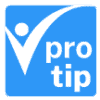How to Study for the Shelf Exams & Step 2…And Impress Residencies

Studying for the shelf exams and Step 2 can be an intimidating endeavor! Your goal this year is to get ready for residency and match with your dream program, but what do programs care most about? Rotation grades (for which the shelf plays a major role), your Step 1 performance (which is now pass/fail as of January 2022), and Step 2 scores (which are tied tightly to your shelf scores and knowledge). As a tutor for medical students, I have plenty of tips about how to excel on your exams and impress residency programs.
Updated August 2022
As of January 26, 2022, Step 1 is now a pass/fail exam. So, what does this change mean for you when applying for residency programs?
Regardless of if you took Step 1 while it was still a graded exam, this shift solidifies the fact that Step 2 holds significant weight when applying to residencies. A combination of a high score on your shelf exams and Step 2 is your greatest indication to residencies that you have taken your clinical years seriously and are well-prepared for their program.
If you’re wondering if you should study for your shelf exams, consider the following: would you rather risk failing a shelf exam to avoid studying during your rotations, or would you rather supplement your knowledge during rotations and set yourself up for success when it’s time to start studying for Step 2? The choice is yours, but it’s safe to say that putting in the work now will pay off in the long run—especially when it comes to high-stakes exams that you’d prefer to ace on the first try.
If you’re looking for a Qbank built specifically for your shelf exams, you might consider trying the Rosh Review Shelf Qbanks:
- 3,500 NBME-formatted practice questions (500 per specialty)
- Detailed explanations, images, and references for every question
- Analytics dashboard to track your performance by category and identify any areas of weakness
- ADD-ON: Take a Mock Shelf Exam in your Boost Box for the best representation of your actual shelf exam (110 questions, just like the actual shelf exam)
Ready to start studying for your shelf exams? Continue reading below or skip to how to incorporate a Qbank into your shelf exam studying.
While there are many approaches to learning and studying, there are several core methods that every student must use to excel on the boards. These methods can often be broken up into three distinct phases. Failing to complete any one of them will lead to lackluster performance on the shelf exams and Step 2, but sticking to the fundamentals and mastering these phases will maximize your chances of getting the score you want.
1. The Learning Phase
The learning phase is exactly what it sounds like: learning the material and mastering the fundamentals. You can’t begin to answer clinical cases or see patients until you’ve learned the basic material, pathophysiology, and management. How to learn depends on the learner: some students prefer videos, others prefer books, and some like in-person lectures.
Regardless of your learning style, you must do targeted review throughout the study period, given the vast amount of information covered on the shelf exams and Step 2. Also, every student begins this process with different fundamentals, so consider this when beginning your learning phase.
2. The Application Phase: Question Banks
Once you’ve finished the initial learning phase, you must apply your knowledge. No matter how you learn best, the shelf exams are standardized tests, so you must practice with high-quality questions to assess your knowledge and prepare for the exam. This is where you’ll spend most of your time on your shelf and boards prep.
You shouldn’t just use questions to learn strategy and how to approach multiple choice questions, but rather to assess your knowledge and identify gaps while also understanding how you will encounter the content clinically. Remember, more high-quality questions means more high-quality learning and higher scores. By challenging yourself with questions, you can piece together the knowledge you gathered in the learning phase and apply it. Don’t skimp on this part—it’s the most important!
3. Active Reviewing
Rather than being a discrete phase, you must continue to do an active and targeted review of the material throughout this entire process. Starting in the learning phase, you must complete a targeted review of the material you’ve already covered. It’s important to first understand the material prior to trying to learn new things, as medical knowledge builds upon itself. By actively reviewing throughout the learning phase, you will solidify your knowledge.
Next, in the application phase, you must continue to actively review old material. However, while doing questions, you must simultaneously review, update your current knowledge based on the questions, and add content that you may have missed in your initial pass through the material. This part of the preparation phase constantly cements your understanding and is the most neglected by students in boards prep.
Step 2 Study Plan
Step 2 is now the most important standardized test for getting into residency, and greater importance is placed on it every year. Remember, quality prep for this exam starts with high-quality shelf exam prep. The material is essentially the same, except you will be expected to thoroughly understand all of the material from the shelves. For this reason, you should continually review old material so you don’t forget it while preparing for each new shelf!
You will need to do dedicated preparation for Step 2. The phases of prep are similar to the shelves, but you won’t need to do the initial material prep and targeted review if you’ve been reviewing for the shelf exams. So if you prepared appropriately for the shelves, all you should need to do for Step 2 are questions, questions, questions.
Remember, quality work with high-quality questions and review always beats out merely doing a ton of questions or multiple passes through the question banks. Pick a Step 2 date early, but factor in rotations and sub-internships that you must do. With this test’s growing importance, the last thing you want is to not give yourself enough time to prepare.
Common Failures
After tutoring hundreds of students, I’ve noticed many common failures that will undoubtedly lower your shelf and board scores:
1. Including too many resources
Students who perpetually shop for another resource, another textbook, another lecture series, or another question bank will struggle with their clinical year, the shelf exams, and Step 2. There isn’t time to jump around from resource to resource, given all the responsibilities you must balance. For this reason, selecting only a few high-quality resources for learning and questions is paramount. Once you’ve locked in the basics, you can consider adding more.
2. Constantly changing resources
While you might have to figure out your learning style for the initial content phase, students who constantly switch between resources will struggle, and their knowledge will not be as comprehensive as relying on a single, high-yield reference. Think and plan ahead!
3. Not having a linear, comprehensive roadmap or plan
Without a plan, students can feel lost and perpetually study without set goals. Because they don’t know what they need to learn for each rotation, they end up doing partial or incomplete studying, and their clinical knowledge and scores suffer. It’s not enough to just come home and “study for a few hours.” Be deliberate and try to cover a set amount of material.
4. Starting with a question bank prior to understanding any material
While it may seem more fun to actively learn via questions, you need to have an initial grasp on the material before attempting question banks. Otherwise, you’re “wasting” the question bank and, in many ways, learning less efficiently in an already time-constrained situation.
How much fundamental learning you need depends on the student. Some students thoroughly understand the material from Step 1 and thus are well on their way for Step 2 and the shelf exams. Others struggled with Step 1 or have incomplete knowledge and need to review the basics. While it’s not the worst thing in the world to learn solely through a question bank and explanations, it may be less efficient. Be honest with yourself about how much you know when assessing your knowledge.
5. Going through the motions
It’s never enough to just passively read through material, watch videos, or answer questions. Many students think they will suddenly start scoring well if they get through a magic number of questions or content. This is never the case. While exposure may improve your scores, active learning is the key to success. This means not just reading the material but seeking to understand it. It’s better to do less work and be more thorough and actually understand the material rather than to try and get through some set amount of material.

If you can’t teach another student the material you just learned, you probably don’t understand it.
6. Using the wrong resources
Finally, if you’re going to put in the effort, you need to use the best resources. You need to read references and explanations that offer you a deeper understanding and explain material intuitively. Simply put, you don’t have time to use redundant and low-yield resources. Your time is valuable, thus it’s imperative to use the best study materials.
Putting It All Together
Start studying early. It’s never too early, as being in the clinical year while learning all this new material is challenging! The big picture is getting into residency, so don’t lose sight of that, and keep in mind that residency programs look at the following to screen their applicants:
- Boards scores: Because Step 1 is now pass/fail, your Step 2 now carries additional weight.
- Rotation grades: Your grades answer the question “Do we want this person as a resident?” If you do poorly on rotations, it’s a red flag for programs that you won’t be a good resident, so don’t cut corners here! Attitude and work ethic are the most important things needed to get honors, followed by medical knowledge. Your shelf score weighs heavily here, as well.
- Extracurriculars: This includes research, other degrees, leadership, and activities that answer the question “Is this student interested in this specialty?” Try to focus on measurable accomplishments such as a degree or a publication rather than more passive activities such as attending conferences or being a member of interest groups. Of course, this is less important than your rotation grades and scores, so never prioritize this over your learning and rotations.
In summary, you want to do the following for the shelf exams:
- Start early and begin the process by learning the material with ongoing targeted review.
- Test yourself by doing a ton of questions for each shelf, and take all the practice NBMEs prior to the shelf exams. Use a high-quality question bank and review thoroughly!
- Do targeted review throughout the entire year for all past rotations. Don’t forget what you’ve already learned.
- Get honors on all your rotations. This shows you’re a great medical student and will make a great resident.
- Prepare for the shelves appropriately with ongoing review. This means you’ll almost be ready for Step 2.
- Continue ongoing targeted review for Step 2 and get ready to do a ton of questions! This process will take at least 2 months unless you’re already scoring very high. Be sure to plan carefully and consider your need for subinternships.
- Get help if you struggle with the above, including creating a plan or sticking to it! A good tutor is worth their weight in gold.
Following this sort of preparation will set you up for success. By staying diligent and disciplined, you can excel and reach your potential!
Learn more about Rosh Review’s Qbanks for medical students.
Get Free Access and Join Thousands of Happy Learners





Comments (0)